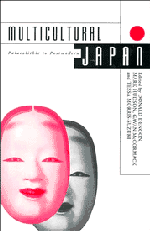Book contents
- Frontmatter
- Contents
- List of Figures and Tables
- List of Contributors
- Abbreviations
- Introduction
- Part 1 Archaeology and Identity
- Part 2 Centre and Periphery
- 5 A Descent into the Past: the frontier in the construction of Japanese history
- 6 The Place of Okinawa in Japanese Historial Identity
- 7 Ainu Moshir and Yaponesia: Ainu and Okinawan identities in contemporary Japan
- Part 3 Contact with the Outside
- Part 4 The Japanese Family
- Part 5 Culture and Ideology
- Afterword: Diversity and Identity in the Twenty-First Century
- Index
7 - Ainu Moshir and Yaponesia: Ainu and Okinawan identities in contemporary Japan
Published online by Cambridge University Press: 05 November 2011
- Frontmatter
- Contents
- List of Figures and Tables
- List of Contributors
- Abbreviations
- Introduction
- Part 1 Archaeology and Identity
- Part 2 Centre and Periphery
- 5 A Descent into the Past: the frontier in the construction of Japanese history
- 6 The Place of Okinawa in Japanese Historial Identity
- 7 Ainu Moshir and Yaponesia: Ainu and Okinawan identities in contemporary Japan
- Part 3 Contact with the Outside
- Part 4 The Japanese Family
- Part 5 Culture and Ideology
- Afterword: Diversity and Identity in the Twenty-First Century
- Index
Summary
An incident on 15 June 1983 made a deep impression on me. An Aboriginal Australian had come to Hokkaido to visit the Ainu. He had been sent to Europe and Japan as part of a campaign to stop uranium mining on Aboriginal sacred land, and introduced himself as an antinuclear ambassador assigned by the Australian Aboriginal Land Council. I took him to the house of an Ainu family in Sapporo and we had a long conversation. He began to talk about the history of his people: ‘In 1788 a thousand Britons arrived in our continent on board a single fleet of ships. Most were criminals sent out to build a colony on our land. From that year, the Dreamtime of Aboriginal Australians was shattered and a history of unhappiness and suffering began’. An Ainu woman replied: ‘1789, the year following the start of your sorrows, saw the Kunashir-Menash Revolt which was the last systematic resistance by us Ainu against Japanese aggression and exploitation. Before that our ancestors had resisted Japanese invaders for more than 300 years, but from that time until this day we have been deprived of our dignity as an indigenous people and, under the control of the Japanese state, forced to assimilate with the Japanese and to suffer discrimination’.
- Type
- Chapter
- Information
- Multicultural JapanPalaeolithic to Postmodern, pp. 117 - 132Publisher: Cambridge University PressPrint publication year: 1996
- 4
- Cited by



